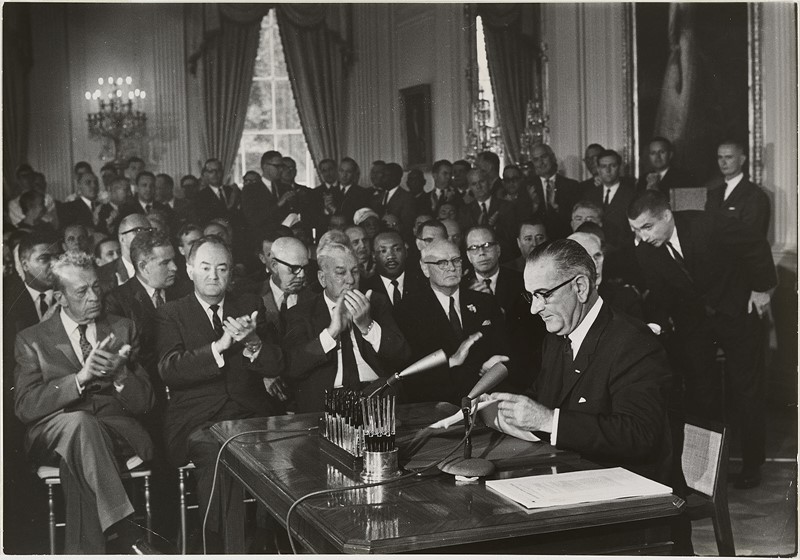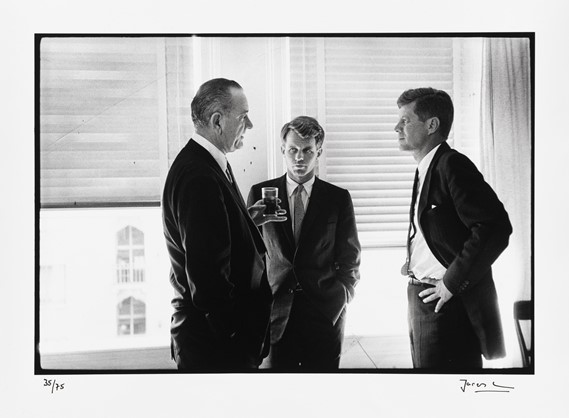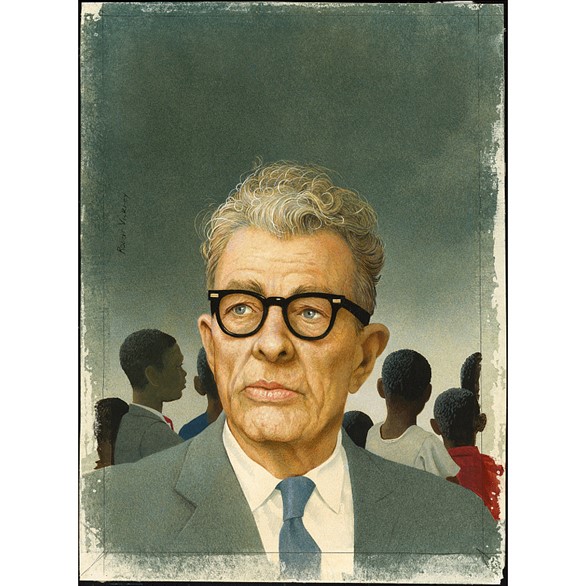“The Bill of the Century”: The Civil Rights Act of 1964

In the mid-1960s—a century after the conclusion of the Civil War—America remained divided on the issue of equal treatment of all citizens. In many parts of the country, black patrons were banned from dining in the same restaurants or staying at the same hotels as whites, and employment discrimination on the basis of “race” was a common practice.
At the urging of civil rights leader Martin Luther King, President John F. Kennedy took action, delivering a nationally televised address on June 11, 1963 in which he proposed a Civil Rights Act. He submitted his proposed bill to the House of Representatives one week later, but fierce opposition caused the bill to stall for several months. It had not made much headway by November when President Kennedy was assassinated. Determined to press on, the president’s brother, Robert Kennedy, and his successor, Lyndon Johnson, vigorously promoted civil rights legislation as a fitting tribute to the late president, despite predictions that support of the bill would result in a seismic political shift, alienating southern voters from the Democratic Party.

After seventy days of public hearings and nine days of debate, a revised version of the civil rights bill was passed by the House on February 10, 1964. As anticipated, the vote replicated the geographic divisions of the Civil War, with only eight-percent of lawmakers from historically Confederate states voting in favor, as compared with ninety-percent of lawmakers from historically Union states.
But it was in the Senate that the divisions became most pronounced. Determined to prevent any vote at all, opponents of the bill launched a filibuster lasting fifty-seven days—the longest in U.S. history—from March 30 to June 10, 1964. The standoff was finally brought to a close with eloquent statements from both sides of the political aisle. Urging that the bill be allowed to go forward, Minnesota Democrat Hubert Humphrey noted, “The question is whether we will have two types of citizenship in this nation, or first-class citizenship for all.” Majority Leader Mike Mansfield, a Montana Democrat, underscored the momentousness of the occasion, declaring: “The Senate now stands at the crossroads of history…. The time for decision is at hand.”
The last words came from Illinois Republican Everett Dirksen, the Senate Minority Leader, who had supported the bill from its inception. “Stronger than all armies is an idea whose time has come,” he stated. “America grows. America changes. And on the civil rights issue we must rise with the occasion.”

The bill was passed by the Senate (with geographic divisions nearly identical to those in the House) and signed into law by President Johnson on July 2, 1964. In recognition of Dirksen’s instrumentality in shepherding the Civil Rights Act through its passage, Time magazine commissioned his portrait for its June 19 cover story on the messy, but ultimately productive give-and-take of American democracy, entitled “The Civil Rights Bill: Product of Principle and Compromise.”